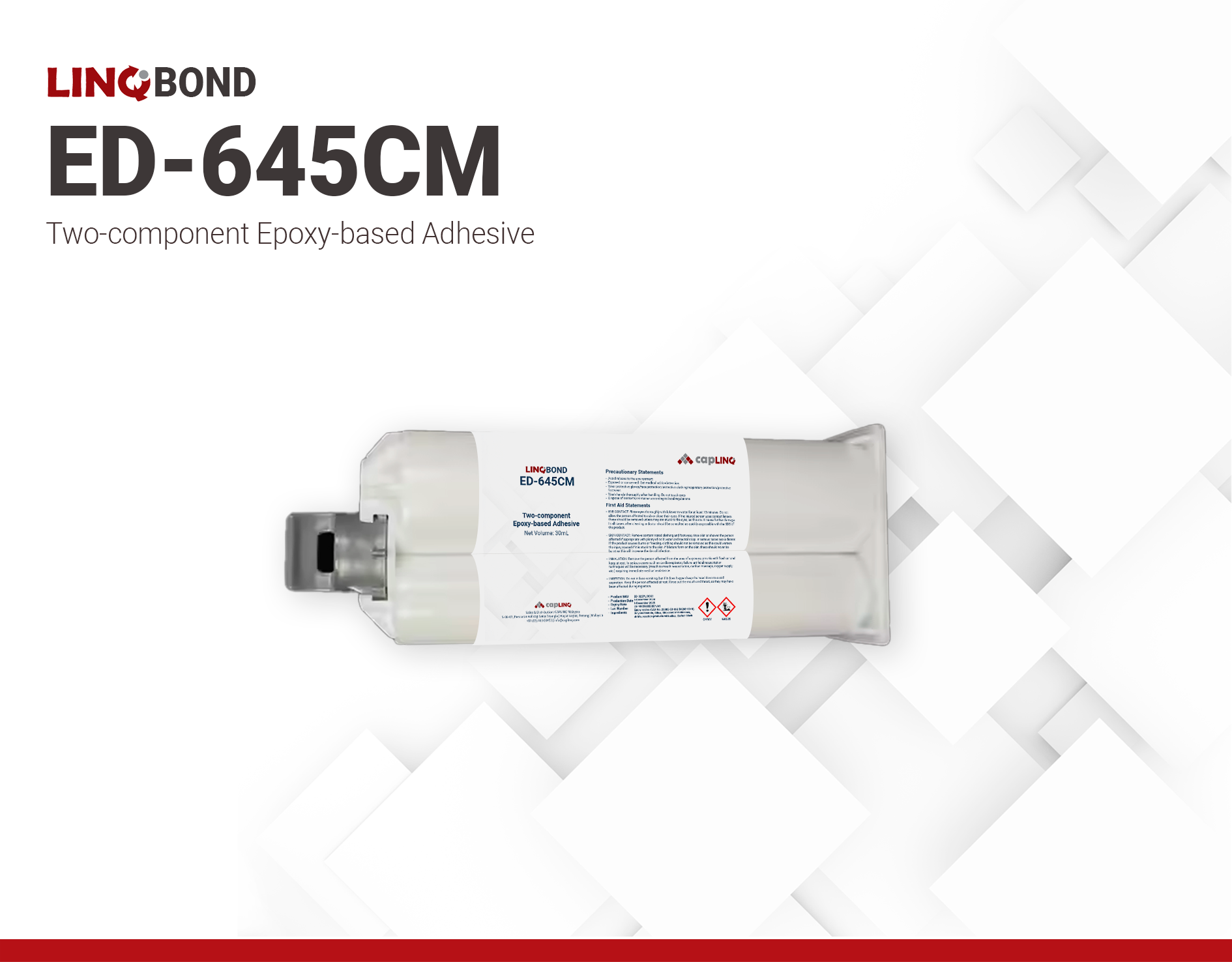ED-645CM | Two-Part Epoxy Adhesive for General Applications
- Excellent electrical insulation
- Reliable in humid conditions
- High Viscosity
Product Description
LINQBOND ED-645CM is a two-component epoxy adhesive with high viscosity and thixotropic properties. These features allow it to control flow and provide sag resistance during both the working and curing processes. The cured product exhibits high toughness and excellent adhesion to different substrates such as glass, ceramics, plastics, and metals. Furthermore, LINQBOND ED-645CM offers high electrical insulation even under high humidity, grease resistance, and chemical resistance. Its hardener does not form an insoluble, whitish solid upon air exposure, and the cured surface remains free from oiliness and maintains a smooth, glossy finish
LINQBONDTM ED-645CM is an ideal solution for bonding materials in different applications. Additionally, it is RoHS 2011/65/EU compliant and meets various environmental testing requirements.
Product Key Features
- Electrically insulating — Prevents short-cuircuiting between electrical components.
- High viscosity and thixotropy — Provides sag resistance for working and curing processes.
- Reliable — Resistant against humidity, grease, and chemicals, ensuring that bonded components are protected over time.
Applications
- General assembly of components made up of different substrates, particularly those made of glass, ceramics, plastics, and metals.
Technical Specifications
| Thermal Properties | |||||||
| Degradation temperature Degradation temperature The temperature at which the materials start losing their properties | 240 °C | ||||||
| Glass Transition Temperature (Tg) Glass Transition Temperature (Tg) The glass transition temperature for organic adhesives is a temperature region where the polymers change from glassy and brittle to soft and rubbery. Increasing the temperature further continues the softening process as the viscosity drops too. Temperatures between the glass transition temperature and below the decomposition point of the adhesive are the best region for bonding. The glass-transition temperature Tg of a material characterizes the range of temperatures over which this glass transition occurs. | 40 °C | ||||||
| Thermal Conductivity Thermal Conductivity Thermal conductivity describes the ability of a material to conduct heat. It is required by power packages in order to dissipate heat and maintain stable electrical performance. Thermal conductivity units are [W/(m K)] in the SI system and [Btu/(hr ft °F)] in the Imperial system. | 0.3 W/m.K | ||||||
| Thermal Impedance | 1 °C·cm²/W | ||||||
| Weight Loss @ 300°C | 3.24 % | ||||||
| |||||||
| Electrical Properties | |||||||
| Surface Resistivity | 4.5e 15 Ohms/sq | ||||||
| Volume Resistivity Volume Resistivity Volume resistivity, also called volume resistance, bulk resistance or bulk resistivity is a thickness dependent measurement of the resistivity of a material perpendicular to the plane of the surface. | 4.5e 15 Ohms⋅cm | ||||||
| |||||||
| Mechanical Properties | |||||||
| |||||||
| |||||||
| Chemical Properties | |||||||
| Water Absorption | 0.26 % | ||||||
Additional Information
Directions for Use
- Weigh the correct proportions and mix thoroughly, scraping both the bottom and the sides of the mixing container until a homogeneous mixture is obtained.
- Ensure that the bonding surfaces are clean, dry, and properly prepared.
- Use mixed product before pot life for optimum properties. Avoid large quantity mixing. Apply adhesive evenly to both surfaces for maximum bond strength.
- Cure time depends on part geometry, materials, bond line thickness, and oven efficiency. Confirm cure schedule with production parts and equipment.




